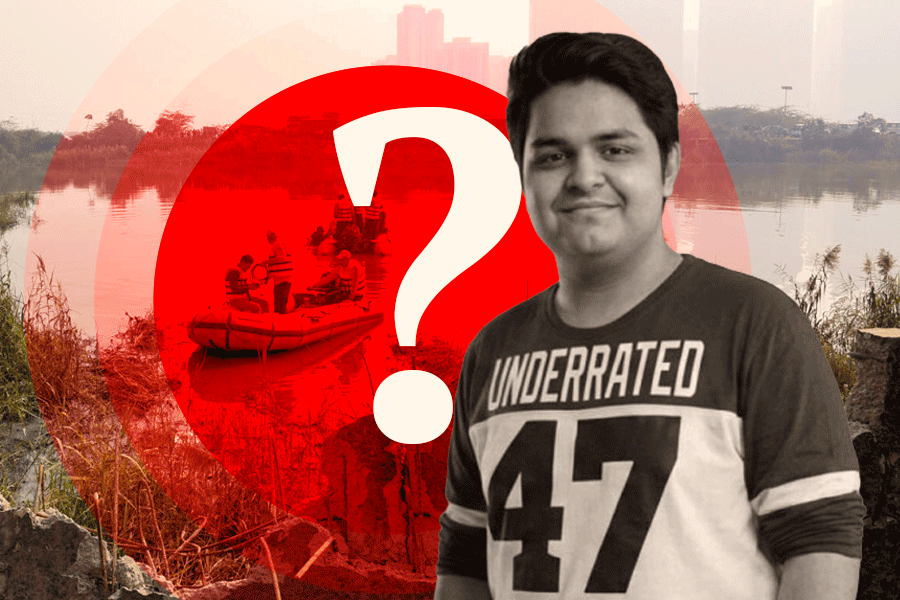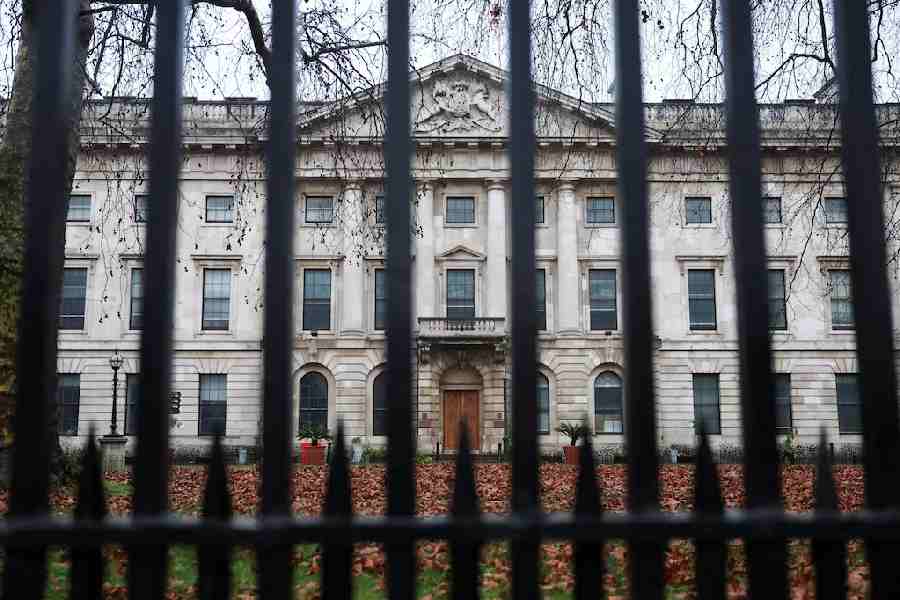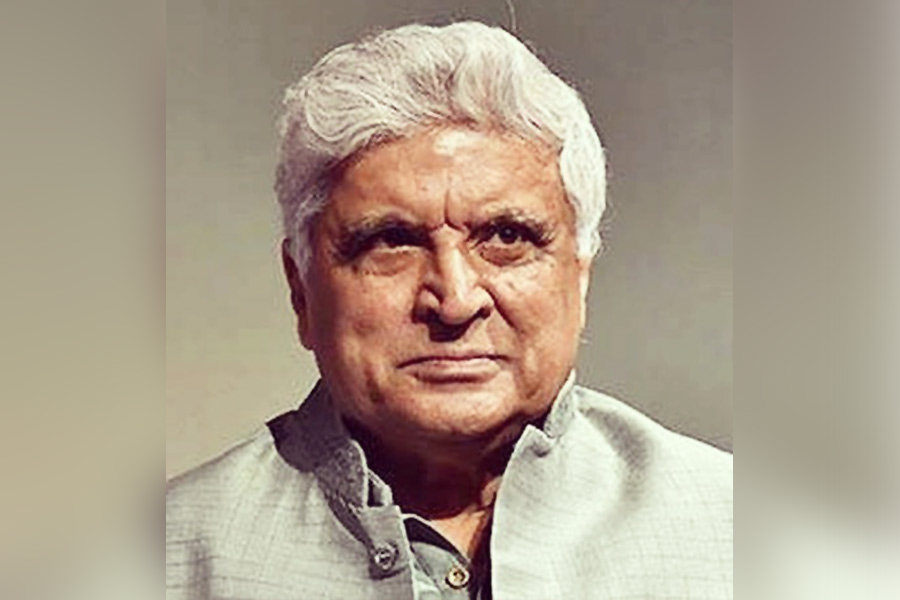
Exactly 15 years ago, Antonio Martinelli, a Paris-based photographer, had held a huge and acclaimed exhibition at the Victoria Memorial Hall of his photographs taken in 1995-97 at exactly the same spots documented by the uncle-nephew duo Thomas and William Daniell in their paintings and popular aquatints in late 18th century.
The "then and now" aquatints and photographs were displayed side by side. Now on the 60th anniversary of the foundation of the Assembly of Chandigarh, Martinelli held a just-concluded exhibition of his photographs of that city at Art Heritage gallery in Delhi titled In the Footsteps of Le Corbusier taken in 1975, 1984 and 2014. The show will travel to Calcutta and Ahmedabad.
Martinelli was busy shooting in Lucknow when I called him, for Akhilesh Yadav had given him permission to photograph the interiors of Lal Barahdari - once the coronation hall of the kings of Awadh, and of late the office and gallery of the Lalit Kala Akademi.
The young chief minister had promised to remove the redundant structures and false ceilings in the grand building, and Martinelli was documenting the process for a future exhibition on different spaces in Lucknow and two books to be funded by the state. "The chief minister seems to have understood that these heritage sites need to be preserved. This is history," said Martinelli.
Martinelli is from Venice, and although he was trained as an architect, India, by sheer chance, enabled him to realise his childhood dream of becoming a photographer. On November 11, 1972, when he was still with the Architectural University of Venice, he joined a small group of young people to travel overland to India, on the "hippie trail", as he dubs it. In Teheran they left their van unattended. When they returned, all their belongings were gone save his camera which was under the seat.
In Delhi he took a photograph of Jantar Mantar and it was published in an Italian magazine in 1975. "India, architecture and photography all came together," says Martinelli. For his graduation thesis he photographed the " mandala-shaped" Srirangam temple on the banks of the Cauveri. "It was not just a documentary but a recreation of the space through photography," he said. Since then Martinelli has photographed architecture of every kind --- classical, heritage, contemporary, and these have been exhibited at prestigious galleries all over the world.
In 1975, on his second trip to India, Martinelli decided to travel to Ladakh when it was opened to tourists. On the way to Srinagar, Martinelli decided to stop at Chandigarh and take some black-and-white stills of Le Corbusier's city. New York architect Albert Mayer and Mathew Novici were initially commissioned to visualise and build Chandigarh, which served as the capital of Punjab and Haryana. Novici died in an air crash in 1950 and the project was offered to Le Corbusier, who along with his cousin Pierre Jeanneret, and two British architects, E. Maxwell Fry and Jane B. Drew, prepared the plans.
It was a strange experience. As a Westerner, Martinelli came to India (he has made at least 45 trips) "attracted by the anarchy - special anarchy - confusion, noise, colour, and roads like labyrinths". When he arrived in Chandigarh and viewed the city "totally designed", vast, clean and grey under the heavy monsoon sky, he had a strange feeling - "shock" - after coming from Chandni Chowk in Old Delhi. It was another India. "This is what I like about India. There are so many different experiences. There are layers of India. I like to scratch the layers but can never reach the bottom. It is a little disturbing."
The second time Martinelli visited Chandigarh was when Hayward gallery in London planned an exhibition in 1985 to celebrate Corbusier's birth centenary. In 1984, Martinelli shot Chandigarh and four other buildings designed by Corbusier in Ahmedabad - the Mill Owners' Association Building, Shodan House and two others belonging to the Sarabhais. This time he used colour transparencies.
He revisited Chandigarh last year. This time he was shooting for the French magazine, Point de Vue, with a digital camera. Sixty years ago, the magazine had published the black-and-white photographs of Lucien Hervé (1910-2007), who was Corbusier's official photographer, and of whom the master had remarked: "You have the soul of an architect."
However, this time it was a very different experience for Martinelli. On his two earlier trips, all the buildings were accessible. So, as one can see in his photographs, rickshaws, cycles and men washing clothes are all visible in front of the structures. Now, it is impossible to approach them because of security. "There are few human beings around. It has become a wild place. There are animals there. I saw a king cobra," exclaims Martinelli.
The Delhi exhibition is a combination of all three trips. Le Corbusier was quoted as saying: "Chairs are architecture, sofas are bourgeois." Martinelli's photographs tell us what the architect, one of the most influential of our times, had in mind when he said so. The severe geometry of these immense reinforced concrete structures, the uniform grids of the brise-soleil or "sun breakers" covering facades - typical features of Le Corbusier's architecture - stand revealed in Martinelli's photographs. In these frames, however, Martinelli adds a human element that does not exist in the stark and austere forms of the French-Swiss architect.
There are splashes of bright colour that dispel the uniform greyness that one associates with Corbusier, who was born Charles-Edouard Jeanneret-Gris on October 6, 1887. As an architect he assumed the pseudonym Le Corbusier, and in 1918 he began to paint encouraged by Cubist artist Amédée Ozenfant. Together, they launched a campaign against Cubism, which, they argued, had become over-decorative. They embraced a new artistic movement named Purism and the years between 1918 and 1922 were devoted to painting.
Martinelli's photographs offer glimpses of Corbusier's artwork. "Colour was an important factor," says Martinelli. "When you shoot in colour you have an eye for colour. The door of the Assembly was in enamel. People have scratched their names on the bright glass."
When he was commissioned by the Metropolitan Museum of Art in New York to photograph the Islamic architecture of Deccan, Martinelli discovered names of individuals scratched on inaccessible points of unprotected monuments. Vandalism has become a national pastime.










